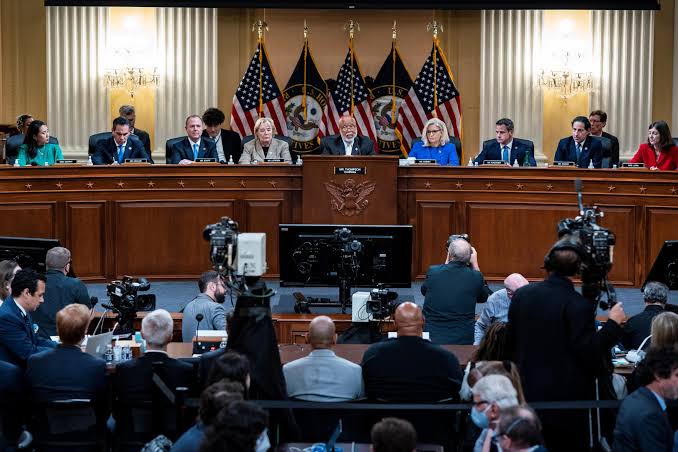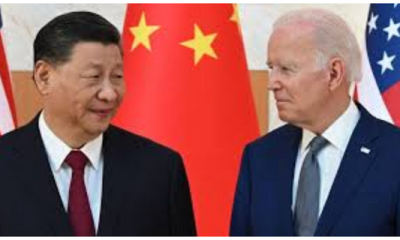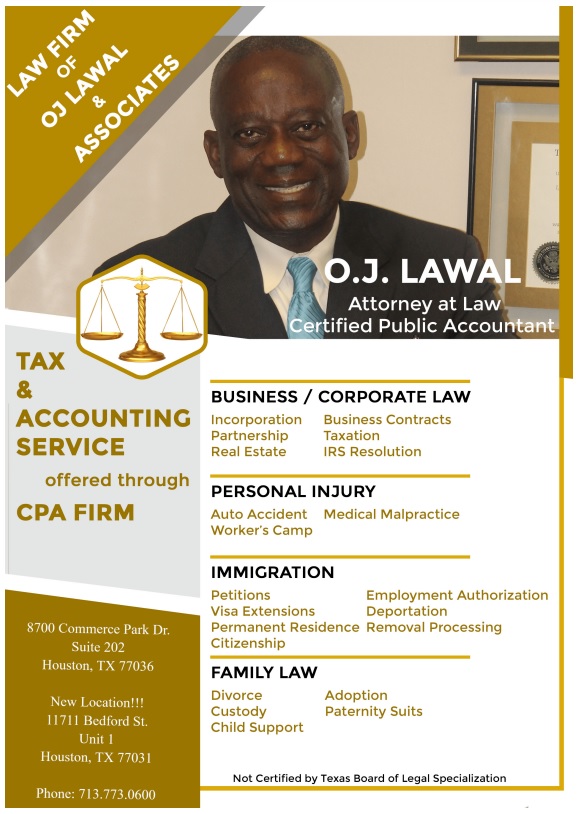International
Key Findings In The January 6 Committee’s Final Report

The January 6 committee investigating the attack on the US Capitol has released its final report.
Eko Hot Blog reports that they have outlined their case that former President Donald Trump was primarily responsible for the 2021 riot at the US Capitol.
EDITOR’S PICKS
-
British Airways: Flights Leaving US Grounded Over Technical Issue
-
Met Office Forecasts 2023 Will Be Hotter Than 2022
-
Capitol Riot Committee Seeks Four Criminal Charges For Trump
It is one of the most thorough accountings yet of the forces that contributed to the deadly attack.
Mr Trump did not co-operate with the committee and declared the investigation a “witch hunt”.
The committee interviewed dozens of witnesses under oath, including Trump administration officials and staff, Trump family members, witnesses to the attack, Capitol police officers, rioters and militia members who were present, and more.
They also subpoenaed materials from the Trump White House to gain an inside look at what was happening around President Trump before, during, and after the attack.
The 845-page report includes a great deal of information that the House of Representatives committee unveiled through a series of public hearings this year. Here are the key aspects of the report.
1) The committee argues Mr Trump continued to make false claims about the election, even though aides told him they were untrue
The committee said that Mr Trump’s decision to falsely declare victory on election night 2020 was “premeditated,” and that only his lawyer, Rudy Giuliani, supported this action. The former president soon began making unfounded claims of widescale voter fraud, and continued to do so with more frequency after the election was called for Joe Biden.
The committee points to their interviews with several advisers and lawyers close to Mr Trump, who say they did not believe these claims of fraud or could find no evidence of the phenomenon.
Most notable among those voices was former Attorney General William Barr, who told the committee during a deposition: “I made it clear that I did not agree with the idea of saying the election was stolen and putting out this stuff, which I told the president was [expletive.]”
The president continued to sow election conspiracies over the coming weeks, though top Trump administration officials testified they informed him the claims were not true.
2) The committee says Trump’s rhetoric brought rioters to DC
The committee makes the argument that the attack on the Capitol was sparked by Mr Trump himself.
In addition to Mr Trump’s repeated fraud claims, the committee points to a 19 December 2020 tweet, in which Mr Trump wrote: “Big protest in DC on January 6th. Be there, will be wild!”
In depositions and court documents, rioters and militia members who were present at the Capitol that day cited Mr Trump’s tweet as their rationale for coming to Washington. The committee cited men like Robert Morss, who was found guilty of assaulting officers during the Capitol breach. Mr Morss “believed January 6th stood for the moment when ‘1776 Will Commence Again’ because President Trump asked them to ‘Be there, Will be Wild'”, the report states.
The committee also cites Secret Service warnings that people were planning to come to Washington on January 6 and threatening to “be wild”.
3) Trump failed to act during the riot
The committee argues that Mr Trump did not take action as the January 6 attack commenced, and that he ignored warnings coming from Congress that a serious attack was unfolding.
Some of their conclusion rests on the testimony of former White House staffer Cassidy Hutchinson, who appeared in a blockbuster hearing earlier this year and also gave depositions about the chaos she says she witnessed in the White House that day.
The committee also cites communications between lawmakers trapped in the Capitol and White House chief of staff Mark Meadows, who was receiving an increasingly desperate barrage of pleas from members of Congress who were forced into hiding.
4) Far-right groups planned – then acted
Tips about armed groups targeting Washington and even the Capitol specifically started coming in December 2020. The report notes that the FBI was sent messages circulating on groups run by the far-right Oath Keepers and Proud Boys.
“There is only one way. It is not signs. It’s not rallies. It’s [expletive] bullets,” said one.
Capitol Police and Secret Service agents – who are responsible for protecting the president – received similar messages from insiders and others. Some specifically named the Capitol as a focus for potentially violent activity.
Some of the chatter came from private encrypted chat apps, but other messages were publicly visible on pro-Trump websites and Twitter.
Members of the far-right groups ended up among the crowds inside the Capitol on 6 January.
Alongside the report, the committee released dozens of raw transcripts of testimony provided by witnesses in closed-door sessions. Several of Trump’s biggest supporters on the far-right fringes – such as Roger Stone, Alex Jones and white nationalist Nick Fuentes – refused to answer questions, citing their constitutional right to avoid self-incrimination.
But testimony from others – including Oath Keepers founder Stewart Rhodes and Proud Boys leader Enrique Tarrio – indicated mutual suspicion, infighting, and conspiratorial thinking among the far-right factions involved in the riot.
Rhodes was convicted of seditious conspiracy and other charges last month and potentially faces decades in prison, while Mr Tarrio is currently on trial.
5) Mr Trump tried to pressure Vice-President Mike Pence to illegally overturn the election results
Part of Mr Trump’s plan to remain in office revolved around a controversial reading of the US Constitution, which he believed allowed Vice-President Mike Pence, who would preside over the election certification, to declare him the victor.
On 6 January, Trump attempted to call Mr Pence, shouting at aides to get him on the phone, the report states. The former president then falsely told Mr Pence he had the power to intervene in the certification.
Witnesses told the committee that at one point, Mr Trump called the vice-president a “wimp” and said he was “not tough enough”.
FURTHER READING
-
Singer Terry Hall Dies Aged 63
-
Biden Slams Rising Antisemitism
-
Iran: Leading Actress Who Supported Protests Arrested
Addressing a crowd on 6 January, Mr Trump said he hoped Mr Pence would “do the right thing”. Later, in the midst of the attack, rioters would chant “Hang Mike Pence” as they stormed the Capitol.
Source: BBC
Click here to watch video of the week:
Advertise or Publish a Story on EkoHot Blog:
Kindly contact us at [email protected]. Breaking stories should be sent to the above email and substantiated with pictorial evidence.
Citizen journalists will receive a token as data incentive.
Call or Whatsapp: 0803 561 7233, 0703 414 5611













